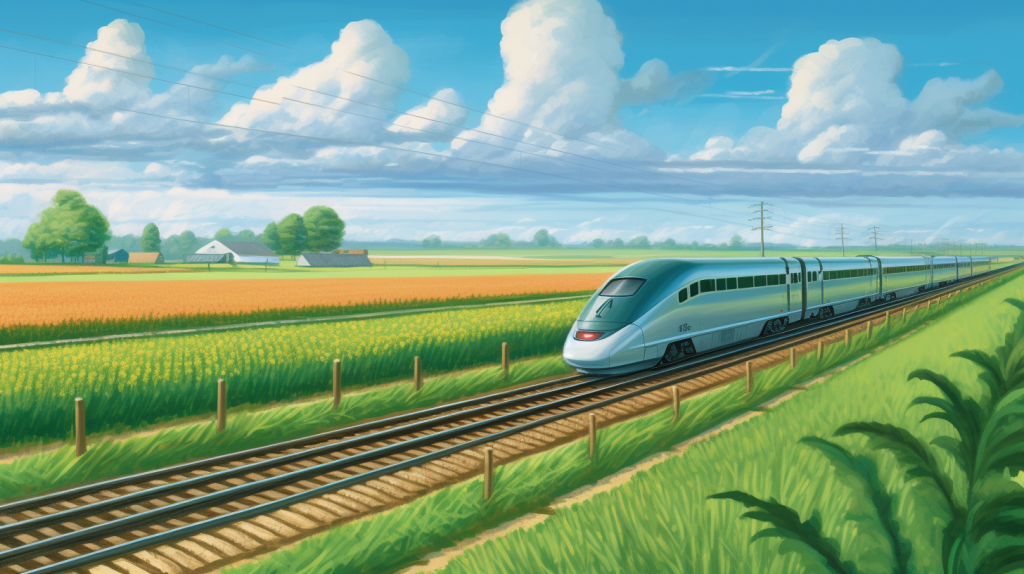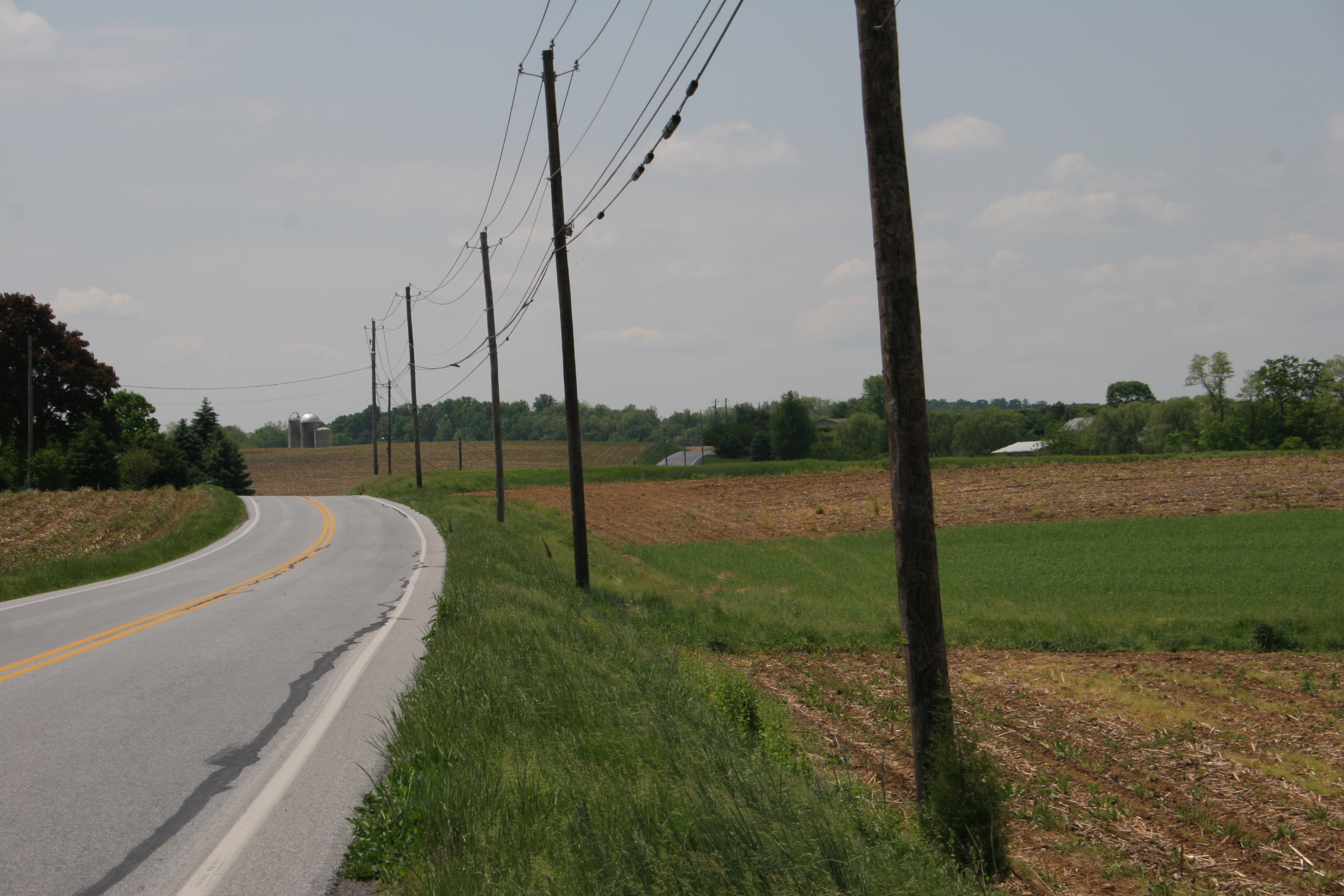Michigan Growth Strategy: Gretchen Whitmer Needs To Step Up Her Politics, Not Her Leadership.
Depending on the person with whom I’m speaking, I often find myself vociferously defending our governor (when I’m with right wingers), or criticizing her (when I’m with boring liberals who worship the ground on which she walks). I believe that the governor has, generally and with a few serious caveats, done a decent job of managing the state. I think she’s actually a decent leader. If it weren’t for her politics, I might vote for her for President one day! But the Governor’s latest revelation– which is anything but- is that the state isn’t growing, so, it’s time to put together a Population Growth Task Force on the matter! Governor: I’ll save you some time and just tell you straight up: if you want to accomplish this thing, It is time to ditch the politics of middle-of-the-road suburban centrism and start embracing a bold vision. I’ll even tell you how.
The primary goal, for the Governor, for anyone leading MEDC, MDOT, or other state or local agencies, should primarily be to retrain your brain to think outside of the internal combustion truck. The growth strategy begins with this, but it doesn’t end with cars– it ends with investment in human beings and the communities in which we live and work.

Economically Defining The Mitten
First, let’s talk about where we are today. Michigan has been losing Congressional seats since the 1960s as a product of explosive population growth in the freeway-laden Sunbelt. This– falling behind the rest of the peloton- was the beginning of the state’s slide into decline, as manufacturing suburbanized and increasingly communities lost their spatial integrity before they lost their economic integrity. No one seemed to care too much at the time, though.
Fast forward to the 2020 census, and numbers showed that the state has grown in recent years, but only by a tiny amount. Detroit, for its part, appears to have shrunken further– to the point that it may well be under 600,000 by 2030 if the current trends continue. Mayor Mike Duggan got particularly riled up about it and threw a public hissy fit worthy of Donald J. Trump.
There is broad recognition of this stagnation, but no consensus on how to manage it. There are, however, a few camps that I’ll outline here.
- The Mackinac types– libertarian, smart, but usually focused on the wrong things, and often keeping company with fascists when it’s politically expedient- will say that the stagnation is because taxes are too high, and we should just lower taxes and exterminate the dirty poors (or whatever libertarians actually believe, I can never keep it straight). To be clear, the Mackinac people are occasionally right, and not in the way that a stopped clock is occasionally right. I interviewed an economist from the think tank earlier this year to talk about the bad economic development math behind the Gotion battery plant in Big Rapids. He was thoughtful and provided me with accurate and useful information. He wins major points for not making it a racist anti-Chinese rant, which is how Republicans have criticized projects like this.
- The Republicans think it’s the fault of the Democratic majority in the state’s legislature, which has been in power for all of *squints at notes* four months. No further comments here, except to note that Republicans in Michigan don’t seem to actually produce any meaningful policy. I would be hard-pressed to name a single meaningful policy initiative Michigan Republicans have advanced in the past decade, whether we’re talking about energy, environment, or transportation.
- The Democrats, uh, well. Here’s where it gets kinda wild. And I can’t summarize it in a short blurb.
What ARE The Democrats Doing?
Michigan Democrats deserve little, but at least some credit, for their policy agenda, which has this year involved codifying LGBT protections into the state’s civil rights law. (Side note: that’s valuable for an upcoming article I’m writing about Pride, so stay tuned!). At the national level, Senator Gary Peters has even done a nonzero number of things this session. Senator Debbie Stabenow, who I’m pretty sure also falls into the category of “Michigan Democrats who don’t think much about infrastructure or innovation unless it involves cars,” is retiring next year, and I doubt that the state Dems will put up anyone particularly progressive to replace her.
Newly-minted rep Shri Thanedar, who bought his way into Congress, well– desperately wants to be one of the cool kids, but at least he isn’t breaking stuff yet. Squad member extraordinaire Rashida Tlaib may well be the only truly progressive Democratic voice Michigan has these days, and she is showing up and asking the good questions. Locally, Detroit is blessed with a mayor who has a zealous belief in Reaganomics, but at least isn’t vilifying gay people.
Within the state, for years, the economic growth strategy has been defined mostly by one thing: the notion that we must subsidize the automotive sector, no matter what. Innovation? Has to be automotive. Mobility? Must involve cars. The “Mobility Innovation” of Ford’s new campus? No one even knows what that means, and Ford certainly isn’t talking. Want to do something– anything, really- but not car-related? Can’t, sorry. It is reminiscent of this scene from a cartoon that I think about all the time. Accordingly, this strategy has relied nearly exclusively on a belief in trickle-down economics around subsidizing the automotive industry and infrastructure for it.

To be clear, this is not unique to Governor Whitmer. Nor was it unique to former Republican Governor Rick Snyder. It is, and has always been, a broadly bipartisan effort that spends, quite literally, billions of dollars each year subsidizing the automotive sector, in whatever fashion imaginable. Tax-increment financing subsidizes the development of new parcels of greenfield land to build battery plants. “Investments” from obscure state funds. Forgivable loans. Low-interest financing. Grants. Endless amounts of tax breaks. All in the name of growth, but growth that never comes. The automakers claim to be interested in decarbonization while building bigger, more polluting, and more lethal trucks that are taller and heavier than ever before.
Then there are the issues that are effectively hardcoded into the fourth branch of government, a.k.a. the regulatory apparatus and the agencies that are authorized by legislation, but operate independently, kinda sorta. MDOT, for its part, further subsidizes this climate arson bonanza by continuing expanding highways it admits it can’t afford to maintain, and we are meant to believe that this is not yet another subsidy for the automotive industry, given that everyone now must travel everywhere, farther (vehicle miles traveled) and for more hours (vehicle hours traveled) in a car that they own, finance, or lease. Reining in the excesses and bad decisions of this multi-billion dollar mess should also take front-and-center priority for the administration.
This doesn’t mean that we need to get rid of the automakers, by any means, or that they’ll even lose out in the end. More on this in a minute!
A Sad State of Economic Development, If You’re Not A Car.
While MDOT can at least lean on the excuse that it’s run by engineers who are hardwired at the factory to only care about cars and infrastructure for cars and trucks, there are more insidious problems at the level of state agencies. Under both Republican and Democratic administrations, the Michigan Economic Development Corporation, for its part, has produced a diabolical mess of tax credits, including multi-billion dollar packages originally negotiated behind closed doors, the details of which were only revealed as the product of a quite onerous lawsuit.
But while some of these deals began under Republican governors and others began under Democrats, Gretchen Whitmer is doing little to assauge skepticism, and certainly nothing to actually move the needle in the right direction. For example, the governor appointed Trevor Pawl, who led the state’s Office of Future Mobility and Electrification, who focused his efforts not broadly on either of those issues, but on– you guessed it- cars. OFME has given neither mention nor effort to the need to improve public transportation, for example, nor to even the notion of well-developed policy around things like safer cars, safer car design, safer streets. Pawl has since departed that role (probably got sick of me trolling him on LinkedIn every time he posted some ra-ra-cars thing several times a week), replaced by his erstwhile deputy, well-credentialed technocrat Kathryn Snorasson who, I assume, is also interested in Cars Of To-Morrow And How The State Should Subsidize Them.
Left-urbanists call this preoccupation “carbrain,” and I have referred to the de facto requirement of car ownership in Southeast Michigan as the “car tax,” because it represents around $10,000 per year in liabilities that the average person frankly shouldn’t have to pay simply for the privilege of getting to and from a job. At SEEL, I worked with people who were in this position and were paying 25-35% of their takehome pay for their vehicle alone, just to come and go from a job that paid them $20 an hour. When I briefly drove for Lyft in 2017, I would take Detroiters from the West Side to a $10-15/hr. job in the suburbs for what was a $10-30 trip. People are stuck in the absence of alternatives that might take anywhere from an hour to three hours to get them several miles between work, school, and home.
Just as in the case of high utility bills reflecting poorly designed buildings and unenforced building codes, the average Michigander mistakenly believes that this is an immutable reality. The car tax means that people have less money to invest in themselves, their local communities, and in local institutions. I don’t know that many people who would turn down a 10-30% raise. Infrastructure investment can serve as the equivalent of this by removing the de facto necessity of car ownership.
So, What Should The Governor Do?
From the biggest picture view here, the Governor’s objective here should be to stop thinking from the top down, and start thinking from the bottom up. This doesn’t mean stop spending money on everything. Rather, it means that she should ditch the paradigm of Reaganomics that continues to define the politics of the utter dinosaurs who lead agencies like MDOT and MEDC. (Unsurprisingly, the state’s road engineering agency just named its new leader who is… a road engineer!). This isn’t purely a state problem, nor is it purely a Michigan problem. Detroit Mayor Mike Duggan, a Democrat, loves trickle-down economics. Governors and legislatures of all political affiliations have authored similarly lavish packages of corporate subsidies in recent years, ranging from Scott Walker’s famously bungled Foxconn deal in Wisconsin to Tennessee’s multi-million dollar packages for companies like Ford, Smith & Wesson, and others.
Where does this lead us?
Here are some broad policy ideas that the Governor should embrace:
1. Actually Do Something About Climate Change If You’re Going To Make The Climate Migration Argument. I find the argument that “Michigan can become a climate haven” to be at odds with the state’s utterly dubious record on environmental policy and regulation, to say nothing of the governor’s unshakable commitment to climate arson by way of subsidizing cars, cars, and more cars. Sure, we have folks like Cory Connolly, who leads the state’s energy policy discussion by… talking about electric cars at conferences. (Wait, that might have been Judd Herzer from MEDC. Possibly both of them!). The MI Healthy Climate conference was actually a decent conference, but it’s disappointing when the state’s only representatives there aren’t really addressing that elephant in the room.
But the neat thing about addressing the climate crisis is that anyone can take part in the process, whether you’re an unrepentant capitalist with a healthy assortment of leftist urges, such as myself, a free marketeer, an engineer, a community activist, or a forest-dwelling hippie. The process does not have to be a broadly transformative one, nor intrinsically revolutionary. It simply begins, to paraphrase a great quote from Angela Davis, wherever you are. However, individuals are stronger when they are empowered to make better decisions through good policy and good culture. Culture is a trickle-down thing. Economics? Not so much. This state eschews even its own historical legacy of conservation in favor of industrial prowess– waning though it is.
The state’s vast wealth of natural resources, however, exist in a complicated state of conflict with that industrial prowess, which brings us to the next item on our to-do list.
2. Actually Make The State Attractive For Migration, Climate-Related Or Not. Especially If You Think That Climate Change Will Drive People Here. I’ve often said that the argument that the Great Lakes are likely to fare better in climate change is not an economic development strategy. But if it is, I will gladly throw up my hands in resignation– before reminding the powers that be that there are third world countries that have better public transportation infrastructure than we do in Michigan. I don’t even need to get into the state’s legacy of pretty egregious environmental contamination, ranging from the Flint Water Crisis in the modern day to the 1970s pre-CERCLA era of PCBs, PBBs, dioxins, dioxanes, and ever so many more weird-looking molecules.
These incidents are not simply the product of bad or nonexistent environmental regulation. That’s a big one, for sure. But they follow on the tail of the state’s long legacy of industrial innovation, which, no matter how well regulated, has usually produced major screw-ups. Such is the nature of complex systems and so-called Normal Accidents (I wrote about this extensively in my thesis in considering the distinction between monumental solutions for energy generation and smaller-scale ones). Let me be clear: This is not an argument against industrial development, nor is it an argument against environmental regulation. It’s simply an argument in favor of better, more prudent policy that endeavors to ensure that innovation never comes at a cost to humans or the natural environment.
Locally, Mike Duggan screwed this one up when he negotiated a corrupt land deal with the Morouns that led to DTE demolishing a historic power plant and a historic marina to build a parking lot and a new factory expansion that has generated a ton of bad press and a ton of atmospheric stink. It’s as though we never learn.
3. Invest in real infrastructure, not just in cars. This is, of course, the big one for me as a city planner with an MBA who loves transportation systems and does not particularly love the relative inefficiency of our current infrastructure, which requires you to sit in traffic and (expensively) create lethal fumes while you do it.
There is an alternate history in which Very Important Lansing People like Cory Connolly, Judd Herzer, Trevor Pawl, the MPSC, MEDC, MDOT, and others have not rejected or declined to interview me for every job I’ve ever applied for to work with their agencies (no lie), and have instead given me the time of day. In this alternate universe, I instead get hired to work on progressive policy in Detroit and Lansing. I can hop on the Grand Boulevard Light Rail, which goes past my house in Southwest Detroit, the whole way to New Center, where I can board a new rail line to Lansing. There are ten trains a day in either direction. The Detroit line continues on to Toledo, where it connects with the lakeshore routes to Chicago, Pittsburgh, and New York.
On the train, I run into a friend, a mid-level manager from General Motors, who is heading up to Lansing to talk about a new workforce development program the company is designing with MEDC to train Michiganders on installation of V2X technologies. The company is the same size or larger than it was years ago, back in 2023 when I wrote that fateful editorial. For whatever reason and bizarre twist of fate, cyclist and former Tour De France champion Greg LeMond, still looking youthful in his eighth decade on the planet, is one of the company’s spokespeople. On live television, he touts how much he loves being able to pack up his new GM eBike into his GM electric vehicle, which has a special compartment for his foldable eBike.
We get to Lansing in under an hour, with an average speed of over 100 miles per hour, even with a lone stop in Novi. (The stop was supposed to be in Howell, but Matt Maddock rallied the people of Livingston, and went on hunger strike to protest, so they dropped it). In this case, I actually have a meeting out in a suburban office park today, and neither the bus nor the Lansing Light Rail go there, so I have to take a Lyft. A driverless, subcompact sedan built in Detroit pulls up, its electronic whine tapering as it comes to a halt, the door opens, I sit down, and we are off.
See? We didn’t even get rid of the cars. We just changed the rules of the (presently somewhat rigged) game, that’s all.

I present this wild and wonderful fantasy portrait of Michigan for a few reasons. For one, it destroys a part of my soul every time I have to interview for a job out of state and think about having to pack up my whole house and move, solely because I have made more progress professionally in other states than I’ve ever made here. Second, politicians generally lack imagination, because they’re stuck in the realm of constrained, scarcity thinking. It is valuable exercise one’s imagination to think about what Michigan would look like if it weren’t blanketed in strip malls, and instead, what it might look like if people had an affordable way to get around– namely in a way that cost less and left clean air for us to breathe. And third, it’s the value of having the conversation.
When I moved to Detroit, for example, few people were talking about cycling safety. Now, we’ve got a diversity of advocates working on policy, implementation, education, and more. We have protected bike lanes, and people no longer yell at me for walking in a crosswalk as they try to run a stop sign (this used to happen with surprising frequency). This is all in the course of less than ten years! What could we accomplish in the next ten if we really, actually tried?
Enough Concomitant Benefits And Opportunities To Please Everyone
When I wrote about the value of creating a Dig Once policy– which facilitates coordination of infrastructure investments to ensure that streets are dug up only once to replace all utilities at once, rather than having to do it in segments and dig multiple times- I pointed out that this was one of a few issues that seemed to have bipartisan support. At least sort of. There was a provision to include a Dig Once policy, co-authored by the unlikely duo of a West Virginia Republican and a California Democrat- that ultimately failed to make its way into the final bill.
But the lesson here is quite significant, because it highlights an opportunity for us to bring people together from either side of the aisle to make something happen.
In the case of the federal bill, it focused on rural broadband. This is a hugely important issue, but so, too, are rural issues of drinking water access, agricultural water supplies, sewage treatment, and, of course, transportation. This is true for a growing community (trying to figure out how to manage sprawl and infrastructure investment) as well as for a shrinking one (facing unique challenges of demographic shifts, namely an aging population). Especially if Michigan is going to grow, we’re going to need to think about these things.
Bringing together rural and urban is something that I have often viewed as one of the Achilles heels of Gretchen Whitmer’s policy platform because she’s a suburbanite who, in the gloomy words of one of my thesis interviewees (who finished his doctorate before taking a job out of state), “the governor doesn’t really seem to care about cities or understand them.” In other words, if you’re in between rural and urban, you seem unlikely to have good ideas to help either, suburbia being in many ways the worst of both worlds.
However, an important rule of political leadership is that if there’s something you can’t do yourself, but you have the ability to lead, find someone else who can work with you to get it done.
Gretchen Whitmer: When We Say “Mobility,” We Really Mean “Cars”
Conclusion: The Money Is There (Or Could Be). Now, We Need The Political Will.
Think this future fantasy land is absolutely nuts? It’s politically bold, sure. But financially, it’s entirely feasible. It could be done for less than the cost of what MDOT is spending to widen I-94 and I-75. Or, it could be done for less than the cost of GM’s banked-but-unspent tax credits from the MEGA deal from MEDC. The whopper here is that if a high-speed rail network eliminated the car tax for even 5% of Michiganders, that represents several billion dollars in additional economic product for the state. That several billion dollars is how much money it would cost to build a high-speed rail connection across the state. This is all napkin math, of course, but it’s illustrative to try and get people to think about it.
While a high-speed rail network across the Mitten sounds wild, it would probably sound similarly wild if you told anyone, without context or background, that you, as a policymaker or state executive, wanted to write a multi-billion dollar check each year to subsidize a single industry or corporation. Time and again, we see it fail. And yet we keep doing it.
The great thing about Michigan is that we have a whole lot of space, whether we’re talking about affordable land for purchase or natural beauty. Fortunately, though, the space we’ve junked up– with billboards, strip malls, and Macomb County- is mostly minimally developed, with low-intensivity land uses like parking lots, nail salons, and smoke shops. This means these things can be easily redeveloped. It means that we can envision a future for our state that embraces sustainability, urban density, and, importantly, preserving natural and open space for park lands, recreational trails, hunting lands, and more.
If we keep down our current path, of course, we will quickly run out of that natural beauty, and will all be stuck in a giant strip mall that stretches from the Great Western Shores of Lake Michigan to the Far East of Lake Huron. A growth strategy must necessarily embrace the value of Michigan’s natural resources of beauty, water, and forest, before emphasizing the value of being able to easily cross-load trailers in a taxpayer-built Car Factory, or whatever. Companies care about the second one, but citizens mulling a job opportunity with that company do not.
The people will be attracted by investment in things that matter to them, directly and functionally.

Parting Words of Encouragement
There are executives that have great leadership skills, and then there are executives that have great management skills. I’m privileged enough to have observed– and worked with- people who embody both. Trump, for example, was great at rallying people– but he was a pretty horrendous manager, and he wasn’t good at rallying all people, only the people who blindly agreed with everything he said. The ability to appeal to anybody was the real magic of politicians like Obama and Clinton.
Unlike Rick Snyder, who was a quarter-billionaire venture capitalist who decided to poke his nose in politics– but remained unconvincing every time he pretended to care about the working class- Gretchen Whitmer has the leadership skills. She’s a compelling speaker. She’s done a Mostly OK job of managing state agencies, although there are admittedly some pretty serious deficiencies in some of them. She has presided over the historic triumph of state Democrats retaking the house and the senate for the first time in 40 years, and I think this is a huge and important feather in her cap– and one that might well help propel the state to future successes in crafting better and more meaningful policy. (If you’ve followed my commentary on the crimes of MDOT, you’ll appreciate that I do not praise a politician lightly).
In other words, she is certainly smart enough and capable enough to get this done.
Whether she is willing to, however, is another question entirely.
I’m writing this as the air quality index in my neighborhood in Southwest Detroit is in the mid 100s, indicating orange and red colors that means that it’s basically not safe to breathe the air outside. That’s largely a product of wildfires that are taking place, well, somewhere that isn’t here. Most Michiganders don’t really care about climate change if it’s not affecting them directly, and this issue is a nagging, background question in the “Michigan as climate refuge” narrative. No one ever thinks it’s a good time to drop what they’re doing to talk about climate change. Or, you know, radically challenge the foundational assumptions around which late capitalism in the golden age of austerity is based.
So, why not now? Whether we’re talking about climate resiliency, decarbonization, or simply reworking our public infrastructure to make sure Michigan families can afford housing, food, and transportation, now is absolutely the correct time to start talking about these things. I can only hope that the governor has the foresight to consider how profoundly transformative this could be for her as a politician, for Michigan as a state, and for the Midwest at large. I’m not just talking about high-speed rail, municipal transit, or infrastructure policy, but that’s a great place to begin.
In the Rust Belt, we hope for a lot, but there are so many subjects that we avoid simply because we’re worried that they’re too complicated, too radical, or too controversial. Personally, I am tired of seeing my well-educated friends move away to distant cities as they complained simultaneously about the lack of opportunity here and the politics of suburban mediocrity. I’d love to keep more of them here. I’d love to be one of the people who sticks around, too. And we can get it done. It just is going to be a heavy lift, and one to which we must decide we want to commit.



